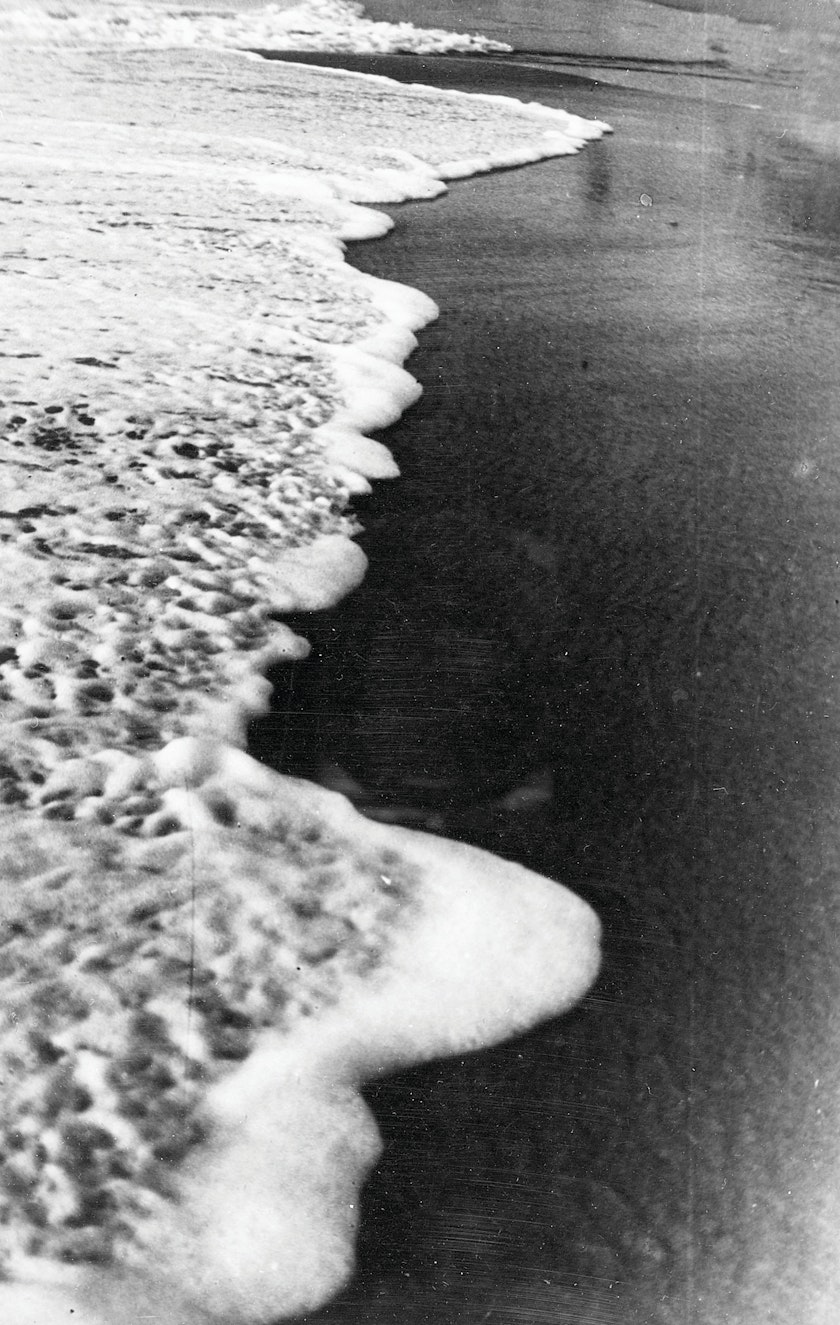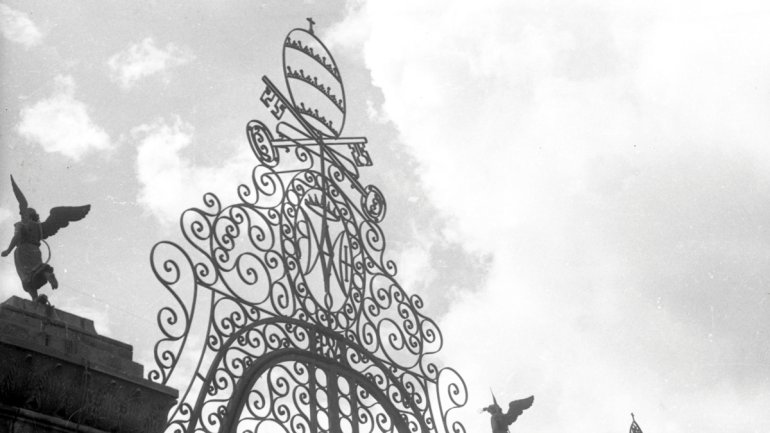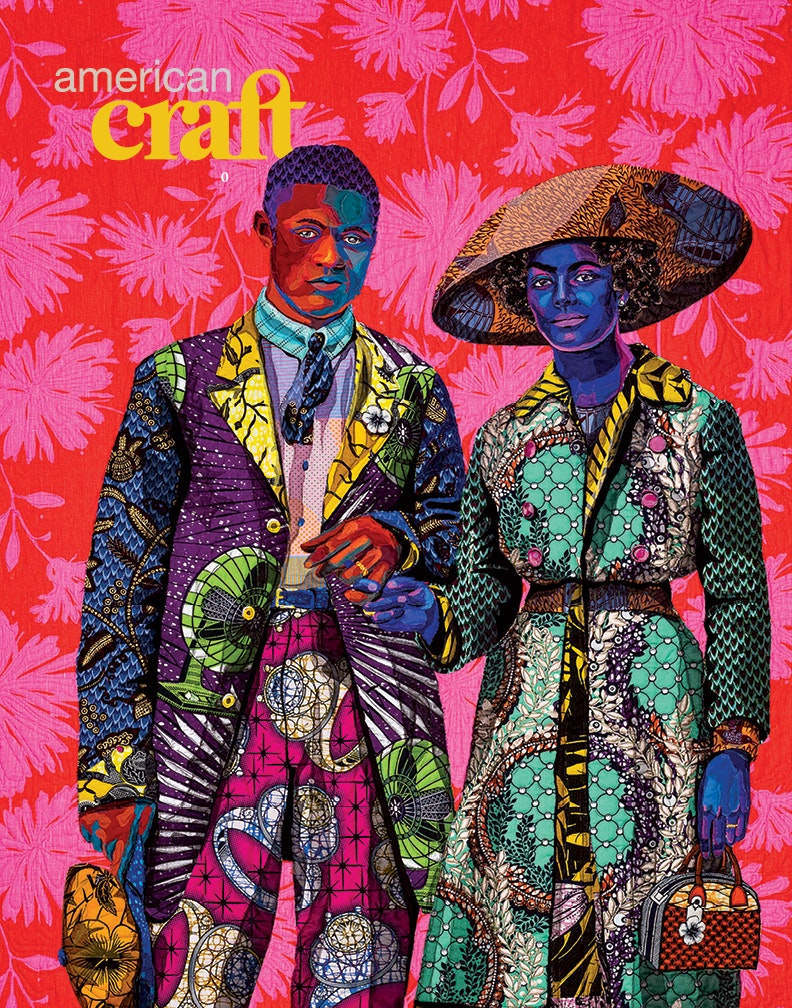Designing
Designing
Multiple forms in Art. Photo by Josef Albers. © 2021 The Josef and Anni Albers Foundation/Artists Rights Society (ARS), New York.

Anni Albers. Photo courtesy of The Josef and Anni Albers Foundation/Artists Rights Society (ARS), New York.
This essay, with photographs by Josef Albers, was originally published in Craft Horizons in 1943. Except for this updated introduction and corrected photo captions, we’re publshing the essay here verbatim. The 1943 introduction ended with this note: “The illustrations accompanying this article will well repay careful study and thought.”
Most man-made things bear such a mark of simplified and obvious orderliness and regularity. Nature is mysterious in her work and multiform. In her hands our button on the beach will become variegated in shape and surface and finally will come to resemble shells.

Multiple forms in Nature. Photo by Josef Albers. © 2021 The Josef and Anni Albers Foundation/Artists Rights Society (ARS), New York.
In all practical work we curiously reverse nature’s way though we know her to be supreme. We find her unsurpassable in variations while we tend to uniformity. Though she is free in change, we seek, bewildered, more permanent forms. Only in work having no immediate purpose—in art work—do we try to practise her mode of shaping things and thus give up our inconsistency.
If in art work we venture to follow nature by learning from her rich variety of form, at the other pole of our work, the developing of tools, we reduce form to its barest essentials. Usefulness is the dominant principle in tools. They do not exist, like works of art, for their own sake but are means to further ends. Some early tools of stone, representations of the human figure, do not show this opposition, since they themselves are sometimes art. They are understood as magical, useful beings, helping us work, but even in their anthropomorphic form they have the accuracy and simplicity which distinguishes all work of man. It has been a long way from these early forms to the complicated mechanism of modern machines. In our tools, today however we can still recognize the image of an arm in a lever. That it is no longer man as a whole that is represented is significant, for actually machines do specialized work, a work of just a section of us. The invention of the wheel stands as an amazing feat of abstraction, translating motion instead of outer shape into new form. It is a further step toward the division, still in progress between art forms and technical forms. (Which does not mean that abstracted forms cannot become the elements of a piece of art.) The concentration on function, as is the main task in the making of tools, brings about concise and unencumbered forms. We are peculiarly conscious of the purity of these forms today among the many objects of our daily surroundings that lack this clarity of conception.
Even though tools appear to express usefulness most truly in their form, we can also find lucid and plain fitness to purpose in unobtrusive objects of our environment. So much do we take them for granted that we are rarely aware of their design. They vary from the anonymous works of engineering to the modest things of our daily life—roads and lightbulbs, sheets and milkbottles. We feel no need to endow these quietly serving objects with qualities other than functional ones. In their silent and unassuming existence they do not call for much of our attention nor do they demand too much time to be spent on their care; neither do they challenge our pride in possessing them. We would not think of collecting lightbulbs or sheets to impress our fellow-men.
Although we like some things to be restrained, in others we ask for an additional quality of provocative beauty. The form of an object which has been dictated solely by fitness is often beautiful, but in a quiet and reticent way. The engaging quality we ask for may be independent of this form, something given to it. Proportion or color or surface treatment can be such an extra quality, bearing this happy sensation we are looking for—a curtain of plain cloth may answer all demands of its use, but when in colors, it will perhaps please us more. We feel that much of our work is incomplete without these further qualities and even associate polishing with finishing.
Today, trying to regain singleness of purpose in the things we make, proportion, color and texture concern us most as completing qualities. We still carry with us, however, manners of perfecting things which belong to another time, the time that was controlled by the craftsman. When a piece of work was in his hands from beginning to end, he could elaborate on the shape and add patterns as a natural development in its completion. But there remain now only a few things which we form one by one, as the craftsman does. We deal today with mass-production and as a result the process of manufacture is necessarily broken up into separate stages, each one in different hands. Thus decorating too has become a separate unit of work, and as such is often only incidental. What once, in the hands of the craftsman had been an organic transmutation of form is now often little more than a postscript. But we continue to decorate, searching for aesthetic pleasure, though the conditions of work have changed. Without adding new form values we obscure the function of things by decorating them. Our decorating today is frequently only camouflage; we make bookends representing animals and vases for flowers, themselves resembling flowers. Through decorating we have also learned the trick of hiding a poor material under a rich pattern. Moreover through ornamentation we give modest things undue emphasis. Since we have far more things than people had in former times, the rivalry among these objects becomes great. No common rhythm of design can tie them together: our chairs cry “hey” and our ashtrays “ho”! We aesthetically overcharge our surroundings.

Simplified useful forms. Photo by Josef Albers. © 2021 The Josef and Anni Albers Foundation/Artists Rights Society (ARS), New York.
Rightly or wrongly, we strive for beauty by adding qualities like color, texture, proportions or ornamentation: yet beauty is not an appendage. When it unfolds free of considerations of usefulness, it surpasses, as art, all the other work we do. In works of art our characteristic uniformity, obviousness and regularity are lost in the search for a synonym, in terms of form, for an inner relation. It is easy to detect the human mind behind it, but like nature, it remains in the end impenetrable.
Concerned with form, the craftsman, designer or artist affects through his work the general trend of style, for better or for worse. The craftsman is today outside of the great process of industrial production; the designer belongs to it. But whether inside or outside, directly or indirectly, he influences the shaping of things. That many imaginative minds find in crafts a wider basis for their work than in the more immediately vital setting of industrial planning, is explained perhaps by the more narrow specialization of industry. Unless we propagate handwork as a political means, as Gandhi does, the craftsman as producer plays only a minor part today. However, as the one who makes something from beginning to end and has it actually in hand, he is close enough to the material and to the process of working it to be sensitive to the influences coming from these sources. His role today is that of the expounder of the interplay between them. He may also play the part of the conscience for the producer at large. It is a low voice, but admonishing and directing rightly. For the craftsman, if he is a good listener, is told what to do by the material, and the material does not err.
The responsibility of the craftsman or artist may go even further to that of attempting to clarify the general attitude toward things that already exist. Since production as a whole is ordinarily directed today by economic interest, it may take the disinterestedness of the outsider, the craftsman or artist, to make us critical of the consequences. We are used to seeing new needs stimulated and new forms emerging for their satisfaction. Our urge for possessing is constantly nourished and is again and again a cause of war. We will have to be more sensitive to the effect of things on us and be aware of the implications that come with possessions. For things such as tools call for action; objects of art, for meditation. Things of our more passive existence, those which protect and serve us, give us rest and ease; others may burden and annoy us. They fluctuate from unassuming servitude to challenging sensationalism. We shall have to choose between those bringing distraction and those leading to contemplation: between those accentuating anonymous service or self-centered individualism; between emphasis on being or on having.
Very few of us can own things without being corrupted by them, without having pride involved in possessing them, gaining thereby a false security. Very few of us can resist being distracted by things. We need to learn to choose the simple and lasting instead of the new and individual; the objective and inclusive form in things, in place of the extravagantly individualistic. This means reducing instead of adding, the reversal of our habitual thinking. Our households are overburdened with objects of only occasional usefulness. Created for special demands and temporary moods they should have no more than temporary existence. But they cling to us as we cling to them and thus they hamper our freedom. Possessing can degrade us.
Having fewer things sets for the designer, or craftsman, a fundamentally new task as it implies designing things for more inclusive use. His attitude will have to be changed from exhibiting personal taste and the exaggeration of personal inclinations in designing to being quietly helpful. He will have to focus on the general instead of on the specific; on the more permanent instead of on the merely temporary. Giving up continuous change does not necessarily mean that we reach a state of stagnation or boredom; it does not mean overlooking moods and modes. This stabilization need not be equivalent to limitation, nor need it mean scantiness. It is designing in a manner to hold our interest beyond the moment. Pure forms will never bore us. Neither do we ever tire of nature. We have to learn from her to avoid overstatement and obviousness. These are truly dull. We have to become aware of nature’s subtlety and her fine surprises and translate these into our idiom. It is easy to invent the extravagant, the pretentious and the exciting; but these are passing, leaving in us only neurotic aimlessness. The things that have lasted and the things that will last are never subject to quick fashion. That good work and great work have been able to survive we may take as a sign of the good sense in us, buried under temporary non-sense. Instead of adjusting our work to the public demand of the moment, so often misinterpreted and underestimated by our industry, which is concerned with fast moving mass-consumption, let us direct it to this true sense of value underlying public demand.
Discover More Inspiring Articles in Our Magazine
Become a member to get a subscription to American Craft magazine to stay in touch with our ever-evolving craft movement.





